The new king of mid-range graphics cards
Verdict
If you’re happy to forgo ray tracing, the AMD Radeon RX 5700 is the very best mid-range graphics card money can buy. For Quad HD and Full HD gaming, there’s no better value alternative.
Pros
- The absolute best value card for Quad HD gaming
- Radeon features feel polished and offer subtle improvements
- Sleek and simple design
Cons
- Lacks ray tracing
- May struggle to hit 60fps in Quad HD with future AAA video games
Key Specifications
- Review Price: £330
- AMD Navi architecture
- 1274MHz base clock speeds
- 1546MHz boost clock speeds
- VRAM: 8GB GDDR6
- TDP: 185W
What is the AMD Radeon RX 5700?
The AMD Radeon RX 5700 is currently the cheapest graphics card sporting AMD’s new Navi architecture, offering a budget alternative to the rest of the line up.
Like the RX 5700 XT, the more powerful sibling, the RX 5700 is capable of playing modern AAA games in Quad HD at 60fps. That said, by opting for this cheaper model, you may struggle to consistently hit that target frame rate for the most demanding of titles, such as The Division 2, but a little fiddling in the graphics setting will certainly amend that.
The RX5700, sat in our test rig and paired with a Ryzen 9 3900X, with a Wraith Prism fan sat on top
But while you might have to sacrifice a bit of performance power by picking the RX 5700 over the more powerful XT model, you’re not losing out on any of the features. The likes of Radeon Image Sharpening, Radeon Anti-Lag and Radeon Chill are all present and accounted for, but sadly there’s still no ray tracing in sight.
Such an omission may well swing the advantage over to Nvidia’s RTX graphics cards, especially following the launch of the RTX 2060 Super card, which inhabits the same price point. However, if you’re not bothered about the new light rendering technology, the AMD Radeon RX 5700 looks to be our top recommended Quad HD card.
Related: Best Graphics Cards 2019
Specs and technology – What are the specs for the RX 5700?
You’re saving £70 by opting for the AMD Radeon RX over the beefier XT option, but what are you losing out in terms of specs? The comparison table beneath shows the specifications for both cards, as well as the details for the RTX 2070 and RTX 2060 which are the biggest current threat to the Radeon 5000 Series.
| RX 5700 XT | RX 5700 | RTX 2070 | RTX 2060 | |
| Architecture | Navi | Navi | Turing | Turing |
| Base clock speed | 1605 | 1274 | 1410 | 1365 |
| Boost clock speed | 1905 | 1546 | 1710 | 1680 |
| VRAM | 8GB GDDR6 | 8GB GDDR6 | 8GB GDDR6 | 6GB GDDR6 |
| Memory bandwidth | 448 GB/s | 448 GB/s | 448 GB/s | 448 GB/s |
| TDP | 225W | 185W | 185W | 160W |
| Price | $399 / £380 | $349 / £330 | £450 | £329 |
Both AMD cards here flaunt a 7nm GPU, which is the smallest we’ve seen yet. Such a small size enables improved speeds, with AMD claiming a 1.25x performance per clock boost compared to previous 14nm GPUS.
Such a small size enables improved speeds, with AMD claiming a 1.25x performance per clock boost compared to previous 14nm GPUS.
What’s the biggest difference between AMD’s RX 5000 Series cards and Nvidia’s RTX cards? The architecture. Nvidia RTX are based on Turing architecture, which supports the exciting new ray tracing and DLSS technology. AMD’s Navi architecture, meanwhile, misses out on those features for now. Aside from ray tracing and DLSS though, the specs of the AMD Navi and Nvidia Turing cards look very similar.
The AMD Radeon RX 5700 has the lowest clock speeds (both base and boost) out of the four graphics cards in our group test. That doesn’t mean it’s the least powerful card here though, especially since it boasts superior VRAM to the RTX 2060.
The standard 8 and 6-pin PCIe ports on the RX 5700, giving you up to 150W of power
The RX 5700 card flaunts 8GB GDDR6 RAM, which is the same found in the more expensive RX 5700 XT and RTX 2070. The RTX 2060, meanwhile, only offers 6GB GDDR6, which looks to have been a major factor in the performance gap between the two cards.
The quartet of cards also share the same memory bandwidth speeds, at 448 GB/s, which yet again shows how close these GPUs are in terms of specs. The new PCI Express 4.0 support looks to be responsible for this improvement.
The RX 5700 also shares the same 185W Thermal Design Power as the RTX 2070. This is quite surprising since the Nvidia card is clearly more powerful, but as long as you’ve got a good enough PSU, this is nothing to be concerned by.
Related: Amazon Prime Day 2019
While most of Nvidia’s RTX cards look near enough identical to each other, AMD has made an effort to tweak the designs so the RX 5700 and RX 5700 XT look noticeably different.
While the RX 5700 XT has a striped textured casing, the RX 5700 is simplified with a smooth exterior. I personally prefer the latter, as it looks more sophisticated and elegant, rather than going for the flashy styling Nvidia has adopted. The single fan setup of the RX 5700 helps to maintain this simple styling, but this mean it’s not quite as effective at cooling itself down during intense GPU workloads.
Two DisplayPort connections on the left, HDMI to the right, and a third DisplayPort connection to the right of that.
The rear of the RX 5700 isn’t quite as attractive though. It’s basically just a circuit board, which looks nowhere near as alluring as the black metal grooved plate on the XT model.
The RX 5700 connections and port offering are the same exact same as the XT. You get one HDMI ports and three DisplayPorts, which is the standard for graphics cards these days. The one negative here is that both AMD cards miss out on USB-C, which is disappointing considering more and more VR headsets are using the new streamlined connection.
Features – What features does the RX 5700 have?
The AMD Radeon RX 5700 may be slightly less powerful than its XT big brother, but the good news is that it shares the exact same features.
There’s nothing quite as ambitious as ray tracing here, but the features on offer do bring subtle improvements, including sharper images and reduced lag.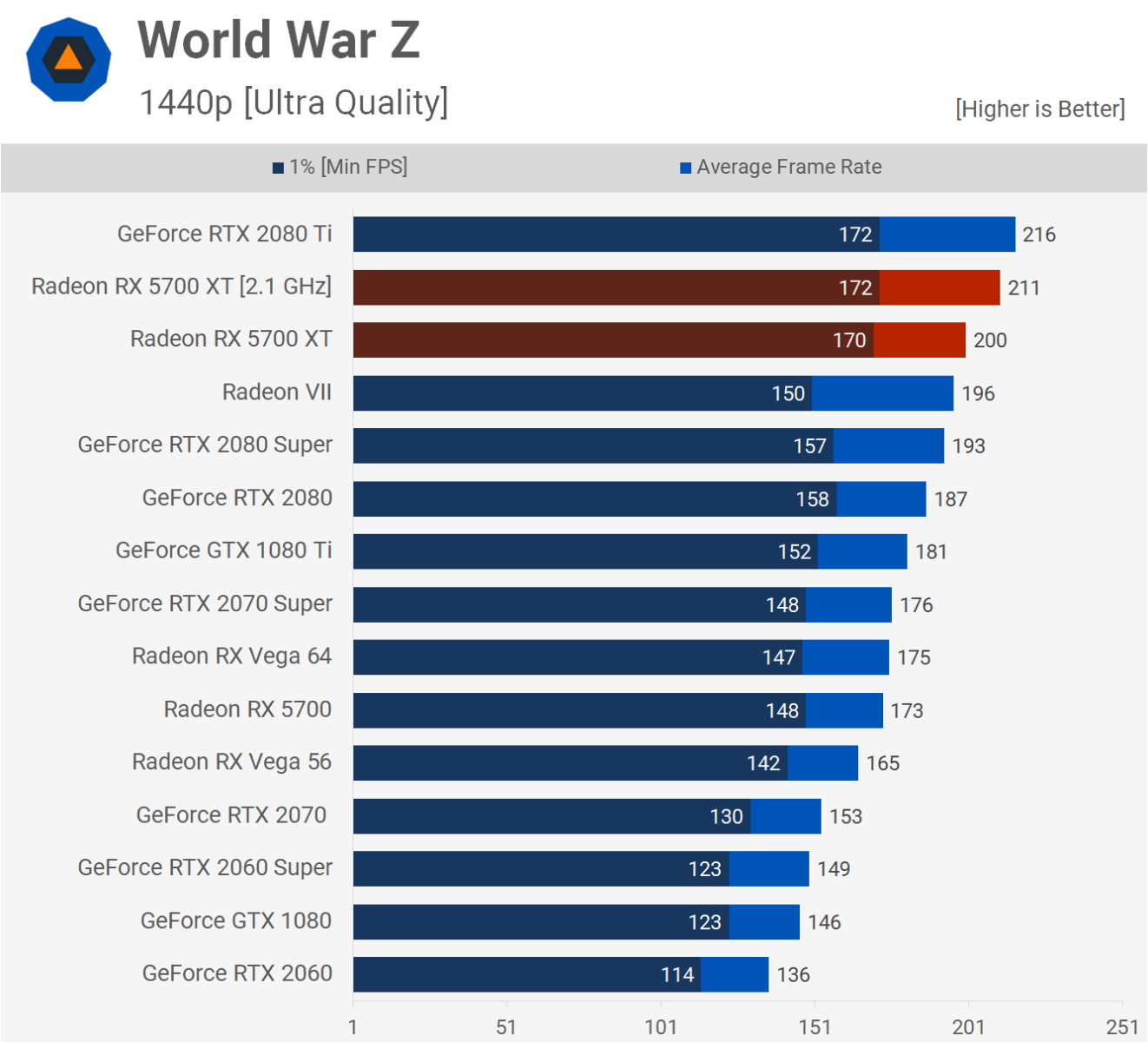 What’s more, these features all feel polished, don’t severely impact GPU performance and are supported by a massive range of video games from launch – all of which ray tracing cannot claim.
What’s more, these features all feel polished, don’t severely impact GPU performance and are supported by a massive range of video games from launch – all of which ray tracing cannot claim.
Here are all the exciting AMD Radeon RX 5700 features:
Radeon Image Sharpening
Radeon Image Sharpening is the pick of the bunch in terms of features, improving the in-game visuals by rectifying the loss in image clarity brought on by the likes of anti-aliasing features.
When activating Radeon Image Sharpening in The Division 2, I noticed subtle improvements: the colours on the American flag looked more vibrant and shadows around walls looks more natural, I also had an easier time making out the details of a character standing at a distance. Have a look for yourself below.
On left: RIS turned off. On right: RIS turned on. (Game: The Division 2)
Unlike ray tracing, Radeon Image Sharpening isn’t a big drain on the GPU so you won’t see big frame rate falls when activating the technology. I played around with the RIS feature with both Shadow of the Tomb Raider and The Division 2, but the maximum frame drop I saw was only a 2fps decline. This GPU efficiency is mighty impressive. Note I got these figures using the XT. I will test the RX 5700 with Radeon Image Sharpening in the coming days.
I played around with the RIS feature with both Shadow of the Tomb Raider and The Division 2, but the maximum frame drop I saw was only a 2fps decline. This GPU efficiency is mighty impressive. Note I got these figures using the XT. I will test the RX 5700 with Radeon Image Sharpening in the coming days.
| RIS Off | RIS On | |
| The Division 2 | 65 | 63 |
| Shadow of the Tomb Raider | 73 | 72 |
And while Nvidia’s ray tracing currently only has a handful of games that support the technology, Radeon Image Sharpening can already function on a huge number of titles. You should be able to activate the feature with any game based on DirectX 9, DirectX 12 and Vulkan graphics – Hitman 2, Metro Exodus and Civilization 6 are just three of many compatible titles.
Radeon Anti-Lag
Radeon Anti-Lag also looks to offer subtle improvements, but could provide a welcome advantage for competitive gamers by reducing the input lag. This means Anti-Lag will reduce the delay between input and on-screen action, giving you more time to react to incoming fire in your favourite multiplayer shooters.
This means Anti-Lag will reduce the delay between input and on-screen action, giving you more time to react to incoming fire in your favourite multiplayer shooters.
According to AMD, Anti-Lag can hammer down the input lag by almost a full frame, which roughly equates to 16.7 milliseconds at 60fps. That doesn’t sound like a lot on paper, but every millisecond counts in fast-paced multiplayer skirmishes.
To maximise the benefits of Anti-Lag, you’ll need to use a low-latency gaming setup. This would include a monitor with a refresh rate over 144Hz which features variable fresh rate technology – and switching up the resolution and graphics settings will also help significantly.
Unfortunately we haven’t had the correct equipment to test Anti-Lag out just yet, but we’ll update this review shortly with our verdict.
Radeon Chill
Radeon Chill is an interesting feature that doesn’t actually improve a gamer’s experience, but it does help to cut down on excessive GPU power consumption, which your electricity bill will no doubt thank you for.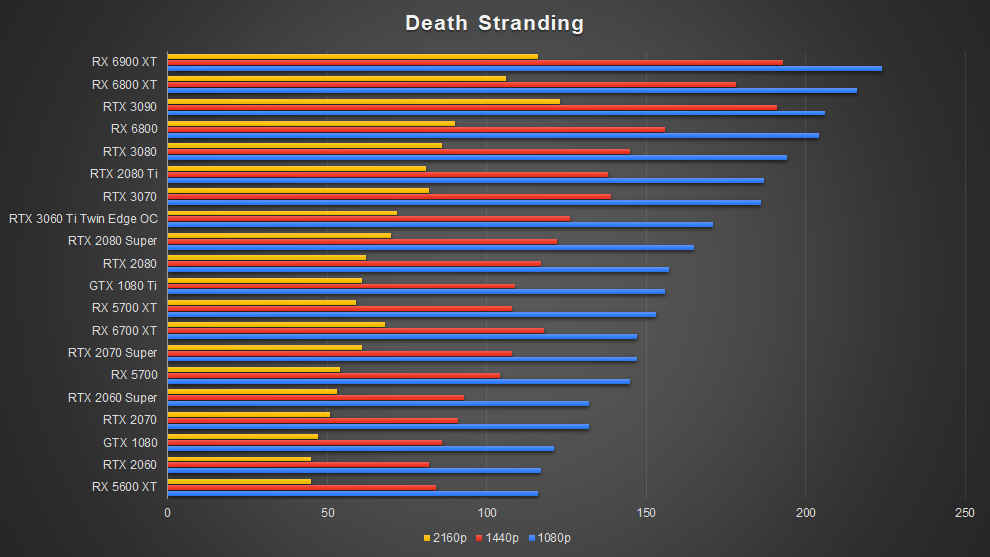 When activated, the Radeon Chill feature will automatically scale down the frame rates when it detects no input and the display is mostly static. This results in a significantly reduced power consumption.
When activated, the Radeon Chill feature will automatically scale down the frame rates when it detects no input and the display is mostly static. This results in a significantly reduced power consumption.
There’s no need to worry about the lowered frame rates impacting visuals, as once you start tapping away at the keyboard or mouse again, the frame rate will be boosted back up. It’s virtually impossible to even detect this is happening with the naked eye thanks to the smooth transitioning, so gamers don’t have to suffer any consequences for saving power.
| Off | On | |
| Power (W) | 310 | 263 |
| Frame rate | 43 | 30 |
You’re cutting down on a lot of power consumption with Radeon Chill, too. I saw a 47W decline when using the feature with The Division 2. Note I got these figures using the XT. I will test the RX 5700 with Radeon Image Sharpening in the coming days.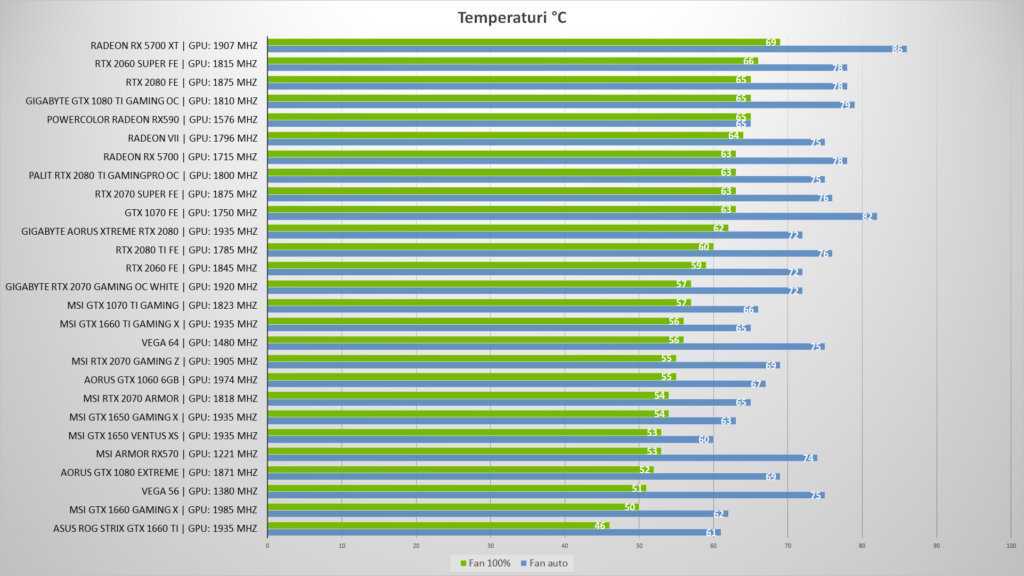
AMD also claims you can save even more power with less intensive games like Apex Legends – AMD suggests it saw a whopping 118W decrease when using Radeon Chill with the popular battle royale shooter.
Related: What is ray tracing?
Performance – How powerful is the RX 5700?
The AMD Radeon RX 5700 may be less powerful than its XT sibling, but it’s still capable of generating high frame rates in both Quad HD and Full HD resolutions with modern AAA games. 4K isn’t out of the question either, but you’ll only see decent frame rates for titles that aren’t too demanding of the GPU – think games that were released a number of years ago like Dirt Rally, or non photo-realistic titles such as Apex Legends.
Surprisingly, the benchmark results show the RX 5700 isn’t actually far off the XT’s performance, so it’s very tempting to save $50 by plumping for the cheaper card. You can see the results below, where you can also compare the RX 5600 to the RTX 2060 and RTX 2070 cards.
You can have the Wraith Prism glow whatever colours you want it to with the right software, but by default it’ll just randomly cycle through its range of 16.8 million colours.
If there’s going to be any graphics card to rival the RX 5700’s bargain value, it will be Nvidia’s upcoming RTX 2060 Super card. Unfortunately we haven’t been able to test this GPU just yet, but expect our benchmark results and review to be published in the coming weeks.
Note that all the cards on test, besides from the Asus ROG Strix Gaming flavoured RTX 2070, are Founders Editions. The performance results for the third-part RTX 2070 shouldn’t be widely different to the Founders Edition card though.
Testing Methodology
In order to ensure a fair test, we benchmarked all four graphics cards on the same computer rig in our office. This means the CPU, SSD and RAM were all consistent through testing. Have a look at our build below if you want to replicate our results:
Motherboard: X570 Aorus Master Gaming
Processor: AMD Ryzen 9 3900X
RAM: Corsair Vengeance 2666MHz, 16GB DDR4
PSU: Corsair CX750M
SSD: Aorus NVMe Gen4 SSD 2TB
OS: Windows 10
I also carefully considered the games for the testing process. Not only did they all need to feature an in-game benchmark test, but I also wanted to make sure there was no advantage for Nvidia or AMD architecture. For this reason, I picked a game optimised for each hardware – Shadow of the Tomb Raider for Nvidia, and The Division 2 for AMD. Dirt Rally was also selected as a representative for games released a number of years ago to see how the GPUs would fair when alleviated of intense pressure.
Not only did they all need to feature an in-game benchmark test, but I also wanted to make sure there was no advantage for Nvidia or AMD architecture. For this reason, I picked a game optimised for each hardware – Shadow of the Tomb Raider for Nvidia, and The Division 2 for AMD. Dirt Rally was also selected as a representative for games released a number of years ago to see how the GPUs would fair when alleviated of intense pressure.
I cranked up the graphics settings preset to the max for every game during testing, also making sure to disable features such as Vsync alter the frame rate depending on the refresh rate of the monitor.
Read below to see the results:
Shadow of the Tomb Raider
Since Shadow of the Tomb Raider is optimised for Nvidia hardware, I expected the RTX cards to have a big advantage for this benchmark test. However, the RX 5700 exceeded expectations by a significant margin, with competitive results with the far more expensive RTX 2070.
The RX 5700 saw an incredibly high average of 68fps with the resolution set to Quad HD. This was only 3fps off the RTX 2070, even though the AMD card is $150 cheaper. And despite the RX 5700 sharing the same price as the RTX 2060, it absolutely thrashed Nvidia’s competing card in this test, taking a gigantic 20fps lead.
The Full HD benchmark results were arguably even more impressive at 88fps, which was actually a higher score than what the RTX 2070 could muster. There was little surprise the RX 5700 wasn’t capable of the recommended 4K performance, only capable of 34fps. That’s not unplayable, but you’re going to have to do a lot of tweaking in the graphics settings to avoid frame rate drops and technical issues.
With all things considered, the RX 5700 showed that it gives the best value Quad HD performance I’ve seen in a graphics card. To be competing with the RTX 2070 despite being $150 cheaper is an absolute marvel.
The Division 2
The Division 2 is the most GPU-demanding game in the test, although it is optimised for AMD cards.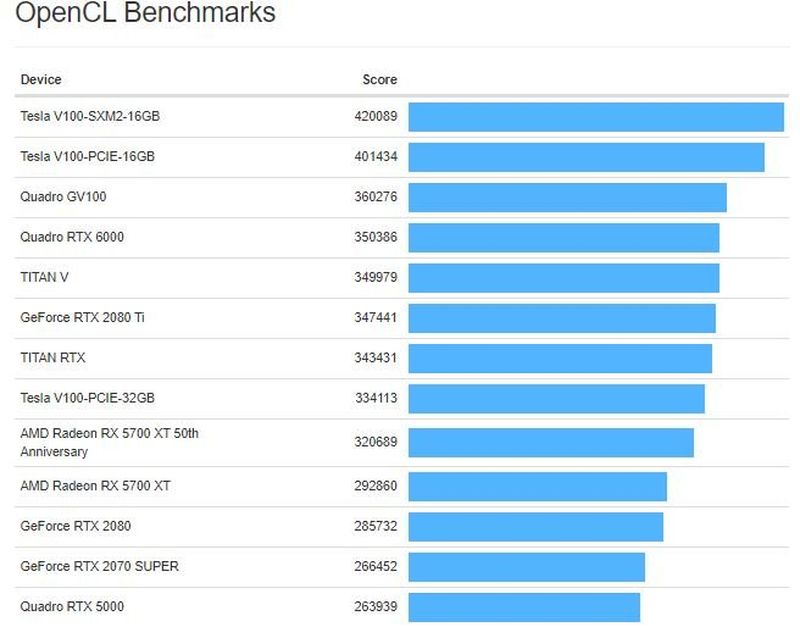 While the RX 5700 performed admirably here, it also laid bare its limitations. With a 57fps score in the Quad HD test, it was just shy of the golden standard and a sizeable 8fps behind both the XT and RTX 2070. It’s GPU-intensive titles like this that may tempt you splashing the cash and opting for a more expensive card.
While the RX 5700 performed admirably here, it also laid bare its limitations. With a 57fps score in the Quad HD test, it was just shy of the golden standard and a sizeable 8fps behind both the XT and RTX 2070. It’s GPU-intensive titles like this that may tempt you splashing the cash and opting for a more expensive card.
You could argue there are very few video games currently available like The Division 2 that are such a drain on the GPU, but then again, you’ve got to consider that a graphics card is a long-term investment, so you could see the RX 5700 struggle with future AAA games in Quad HD – think Cyberpunk 2077 and Halo Infinite.
Of course, it’s a different story with Full HD. With an 83fps result when the resolution was set to 1920 x 1080, you’re getting super-smooth performance that’s not far from being identical to the RTX 2070’s offering.
Dirt Rally
The big news for the RX 5700 when it comes to Dirt Rally? It’s capable of 75fps when set to 4K. This suggests the majority of titles released three or four years ago should be playable in Ultra HD. If you’re looking for a mid-range graphics card to plough through your back catalogue, this is possible the best value card to buy.
This suggests the majority of titles released three or four years ago should be playable in Ultra HD. If you’re looking for a mid-range graphics card to plough through your back catalogue, this is possible the best value card to buy.
When it comes to Quad HD and Full HD, the RX 5700 results were just as astounding, offering up 131fps and 147fps performances respectively. These sky-high figures will be great for making use of your 144Hz gaming monitor, especially since this is a fast-paced racer where the added frames can make a massive difference.
For the Quad HD performance, the RX 5700 actually outpaced the RTX 2070, which is super impressive considering the price gulf between the two cards. The RX 5700 once again left the RTX 2060 in the dust – in fact, the RX 5700 bested the RTX 2060 in every single in-game benchmark across all three titles, usually be a huge margin too.
3DMark Fire Strike Ultra
The 3DMark Fire Strike Ultra benchmark software is useful for measuring the raw performance of a graphics card, while also proving useful for power consumption and peak temperature data.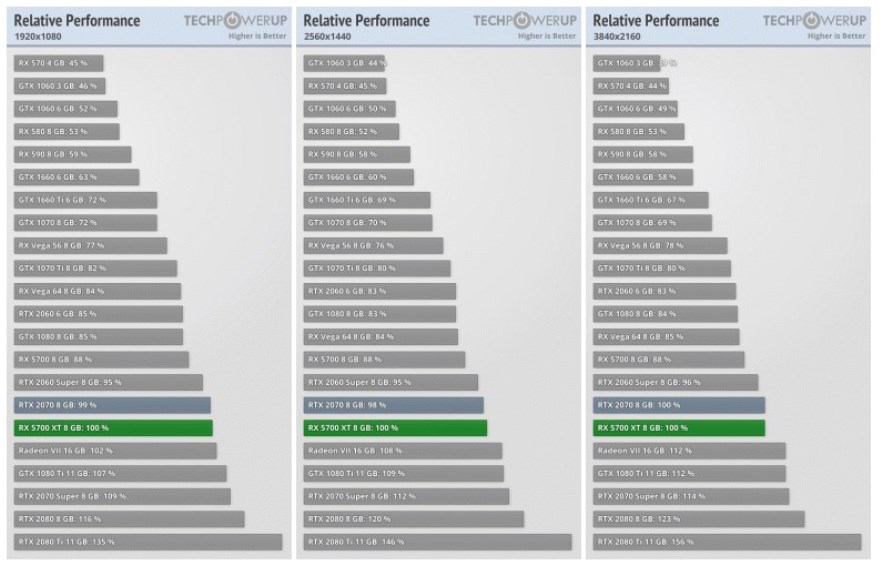 It does this by simulating a 4K game in order to push the GPU to its absolute limit. That said, it’s not an accurate indicator for in-game performance, so results should only be taken with a pinch of salt.
It does this by simulating a 4K game in order to push the GPU to its absolute limit. That said, it’s not an accurate indicator for in-game performance, so results should only be taken with a pinch of salt.
As expected, the RX 5700 ranked third in our 3DMark Fire Strike Ultra test, behind both the XT and RTX 2070. But with a score of 5351, it outpaced the RTX 2060 (4309) by quite a distance, despite costing the same.
The drawback is that the RX 5700 is more power thirsty than the RTX 2060, as the AMD GPU saw a peak 326.7W peak power consumption during the Fire Strike Ultra benchmark. That said, features such as Radeon Chill should help to reduce this figure.
One of the biggest flaws of the XT was how hot the graphics card became when playing games. The RX 5700 saw a similar but less severe issue with a peak temperature of 69°C. That’s cooler than the XT’s temperatures, but also warmer than both Nvidia cards in this group test. The temperatures aren’t so significant that you won’t be able to fit the RX 5700 in a compact case, though.
Overclocking – Can you overclock the RX 5700?
Since the AMD Radeon RX 5700 XT didn’t perform well in the overclocking department, I wasn’t optimistic the RX 5700 would fare better, despite having a significantly lower peak temperature during the 3DMark test. Turns out my pessimism was well founded.
As soon as I performed a 100MHz overclock on the RX 5700 via MSI Afterburner while running Unigine Heaven, temperatures soared from 60°C all the way up to 85°C, which is approaching a worrying heat. Unsurprisingly, I was blocked from overclocking the card any further at this point – I’m unsure whether it was the AMD drivers or the MSI Afterburner that stepped in, but either way it’s an indicator the RX 5700 couldn’t handle any more pressure.
Disappointingly, this 100MHz overclock only results in a 3fps improvement, so it’s hardly worth doing at all – especially since you’re subjecting the card to uncomfortable heat. The RX 5700 simply wasn’t designed to be an overclockable GPU.
Should I buy the AMD Radeon RX 5700?
All eyes were on the XT when AMD revealed both of its Radeon RX 5000 cards, with the Radeon RX 5700 considered to be a less exciting affordable alternative. After testing the card though, I actually believe the RX 5700 is the superior value AMD card with performance results closely rivalling its more powerful sibling, despite being $50/£50 cheaper.
The RX 5700’s generous price point would lead you to believe the RTX 2060 is its closest Nvidia rival in terms of performance – but that’s not the case. The AMD card frequently matched (and occasionally bettered) the benchmark results of the RTX 2070, despite it costing around $150/£120 more.
If you’re not making the jump to 4K anytime soon, then the RX 5700 is an excellent choice for Quad HD and Full HD gaming.
In both Quad HD and Full HD resolutions, the RX 5700 consistently punched above its weight. And while 4K is too much of an ask for modern AAA titles, the RX 5700 is very much capable of dizzy Ultra HD heights with older and less intensive titles.
The only blemish the RX 5700 truly has is the lack of ray tracing, which may convince you to either wait for next year’s potential AMD graphics card offering or instead opt for the RTX 2060 or upcoming RTX 2060 Super. But if you’re not bothered by the revolutionary light rendering technology, then the AMD Radeon RX 5700 is my new undisputed mid-range graphics card champion.
Related: AMD Radeon RX 5700 XT Review
Verdict
If you’re happy to forgo ray tracing, the AMD Radeon RX 5700 is the very best mid-range graphics card money can buy. For Quad HD and Full HD gaming, there’s no better value alternative.
AMD Radeon RX 5700 GPU Review — Page 2 of 4
Here are the key specifications for the AMD Radeon RX 5700:
AMD Radeon RX 5700 Specifications
The AMD Radeon RX 5700 GPU features AMD Radeon VR Ready Premium for those interested in VR applications. It does not support a USB-C connection like we are seeing on newer NVIDIA cards for VR/ AR headset support.
The GPU is one of the first to feature PCIe 4.0. Of course, a suitable motherboard that includes PCIe 4.0 slots will be required to take full advantage of this new PCIe specification.
Testing the AMD Radeon RX 5700 Graphics Card
Here are the specs of our testbed that we are using for our entire series:
- Motherboard: ASUS WS C621E SAGE Motherboard
- CPU: 2x Intel Xeon Gold 6134 (8 core / 16 Threads)
- GPU: AMD Radeon RX 5700
- Cooling: Noctua NH-U14S DX-3647 LGA3647
- RAM: 12x Micron 16GB DDR4 RDIMMs Low Profile
- SSD: Samsung PM961 1TB
- OS: Windows 10 Pro Workstation
As a quick note, since we are focused on servers and higher-end workstations, our test platform was a dual Xeon machine. We test a lot of PCIe Gen4 platforms and CPUs as you can see in our AMD EPYC 7002 Series Coverage at STH Road to Rome Hub. Still, a lot of the EPYC “Rome” platforms are PCIe 3.0 based as BIOS updates to existing platforms.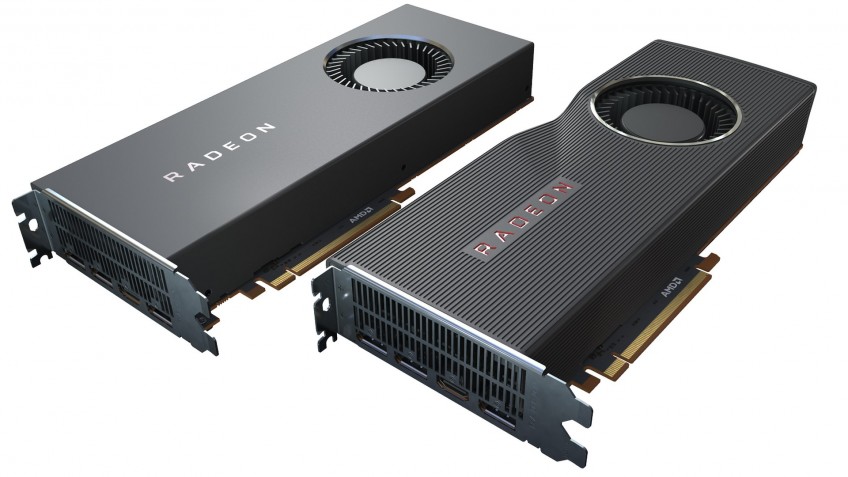 We will re-look at the testbed in 2020 as the market shifts to PCIe Gen4.
We will re-look at the testbed in 2020 as the market shifts to PCIe Gen4.
Here is the obligatory GPU-Z shot of the AMD Radeon RX 5700:
AMD Radeon RX 5700 GPUz
GPU-Z shows the primary stats of our testing the AMD Radeon RX 5700 Graphics Card. The GPU clocks in at 1465 MHz and Memory speed at 1750 MHz. Pixel Fillrates run at 110.4 GPixels/s, and Texture Fillrate comes in at 248.4 GTexel/s.
Let us move on and start our testing with computing-related benchmarks.
AMD Radeon RX 5700 Compute Related Benchmarks
As we move along with the GPU testing we felt it was time to clean up our database and results in graphs, we have dropped the Silent and OC results for each card and kept the fresh out of box numbers. Doing so made our graphs much easier to read, many users here at STH do not run cards in those configurations or simply cannot do so in Linux based systems so this was warranted. We still have our test numbers and might revisit those settings later on. As we have noted before, there are several tests where the AMD Navi compute drivers cannot complete, so we are going to call those out in this review.
Geekbench 4
Geekbench 4 measures the compute performance of your GPU using image processing to computer vision to number crunching.
AMD Radeon RX 5700 Geekbench
Our first compute benchmark we see the AMD Radeon RX 5700 achieves results near an NVIDIA RTX 2070 Super on OpenCL. The Radeon RX 5700 does not have CUDA capabilities which is why there is only one bar.
LuxMark
LuxMark is an OpenCL benchmark tool based on LuxRender.
AMD Radeon RX 5700 Luxmark
With LuxMark results, we find the AMD Radeon RX 5700 Graphics Card again performs near the NVIDIA RTX 2070 Blower GPU which is also close to the AMD Radeon Vega Frontier Edition.
AIDA64 GPGPU
These benchmarks are designed to measure GPGPU computing performance via different OpenCL workloads.
- Single-Precision FLOPS: Measures the classic MAD (Multiply-Addition) performance of the GPU, otherwise known as FLOPS (Floating-Point Operations Per Second), with single-precision (32-bit, “float”) floating-point data.

- Double-Precision FLOPS: Measures the classic MAD (Multiply-Addition) performance of the GPU, otherwise known as FLOPS (Floating-Point Operations Per Second), with double-precision (64-bit, “double”) floating-point data.
AMD Radeon RX 5700 AIDA64 GPGPU Part 1
In terms of double-precision, the RX 5700 is closer to a GeForce RTX 2080 Ti here. In single-precision, it falls below a GeForce RTX 2060 Super.
The next set of benchmarks from AIDA64 are:
- 24-bit Integer IOPS: Measures the classic MAD (Multiply-Addition) performance of the GPU, otherwise known as IOPS (Integer Operations Per Second), with 24-bit integer (“int24”) data. This particular data type defined in OpenCL on the basis that many GPUs are capable of executing int24 operations via their floating-point units.
- 32-bit Integer IOPS: Measures the classic MAD (Multiply-Addition) performance of the GPU, otherwise known as IOPS (Integer Operations Per Second), with 32-bit integer (“int”) data.

- 64-bit Integer IOPS: Measures the classic MAD (Multiply-Addition) performance of the GPU, otherwise known as IOPS (Integer Operations Per Second), with 64-bit integer (“long”) data. Most GPUs do not have dedicated execution resources for 64-bit integer operations, so instead, they emulate the 64-bit integer operations via existing 32-bit integer execution units.
AMD Radeon RX 5700 AIDA64 GPGPU Part 2
With AIDA64 GPGPU benchmarks we find the AMD Radeon RX 5700 is closer to the NVIDIA RTX 2060 (Super) line for many of the results. The 32-bit integer figures for NVIDIA are the outlier with much higher figures for NVIDIA here.
hashcat64
hashcat64 is a password cracking benchmarks that can run an impressive number of different algorithms. We used the windows version and a simple command of hashcat64 -b. Out of these results we used five results to the graph. Users who are interested in hashcat can find the download here.
AMD Radeon RX 5700 Hashcat
With hashcat, the AMD Radeon RX 5700 drops below the NVIDIA RTX 2060 performance levels, closer to the NVIDIA GeForce GTX 1660. It is also interesting to see that the aging AMD Radeon Vega Frontier Edition is still much faster than the original Navi cards here.
It is also interesting to see that the aging AMD Radeon Vega Frontier Edition is still much faster than the original Navi cards here.
We also note that with hashcat64 v5.0.1 we could not get to run with Navi-based cards. We instead used the Beta hashcat v5.0.1.1394 for our tests just to get them to run.
SPECviewperf 13
SPECviewperf 13 measures the 3D graphics performance of systems running under the OpenGL and Direct X application programming interfaces.
AMD Radeon RX 5700 SPECviewperf Part 1AMD Radeon RX 5700 SPECviewperf Part 2
With SPECviewperf we see interesting results, in parts of this benchmark the AMD Radeon RX 5700 has excellent performance but falls considerably in others like Maya, SNX, and CREO where the Pro cards would be better. We find performance of the RX 5700 here between the NVIDIA GeForce RTX 2080 and the RTX 2070.
Let us move on and start our new tests with rendering-related benchmarks.
AMD Radeon RX 5700 XT review
judgment
One of the best graphics cards for Quad HD gaming if you don’t mind skipping ray tracing
Pros
- Fantastic value for Quad HD gaming
- Features Radeon feels useful and polished
- Cool design
Cons
- No ray tracing
- Runs hotter than Nvidia cards
- Poor overclocking potential
Main characteristics
- The price of the recall: £ 380
- AMD Navi Architecture
- Basic clock frequency 1605 MHz
- 1905 MHz clock frequency
- VRAM: 8 GB GDDR6
- Main page
- >
- >
- ATI
- >
- Radeon HD 5700
9000 9000 9000 9000 900 Radeon RX 5700XT?
The AMD Radeon RX 5700 XT is one of the very first graphics cards to launch with the highly anticipated AMD Navi architecture, which uses the 7nm process technology. With the AMD Navi architecture serving as the basis for the dedicated GPUs for the next-gen PS5 and Xbox 2 consoles, this is an extremely interesting addition to AMD’s graphics card lineup.
With the AMD Navi architecture serving as the basis for the dedicated GPUs for the next-gen PS5 and Xbox 2 consoles, this is an extremely interesting addition to AMD’s graphics card lineup.
AMD is positioning the RX 5700 XT as a rival to Nvidia’s RTX 2070 graphics card with similar specs and performance for Full HD and Quad HD gaming, though it costs £70 less.
However, one major problem with the AMD RTX alternative is that it lacks the technology needed to enable ray tracing, which makes games experience stunning and more realistic lighting and reflection effects.
«Radeon» glows red when connected to the motherboard and turned on
To compensate for this, AMD has added many additional features to its RX 5000 series cards, including Radeon Image Sharpening and Radeon Anti-Lag. The former aims to restore clarity to in-game images that have been negatively impacted by other post-processing effects, while the latter claims to reduce the time between player input and response by up to 31%, which should please competitive gamers.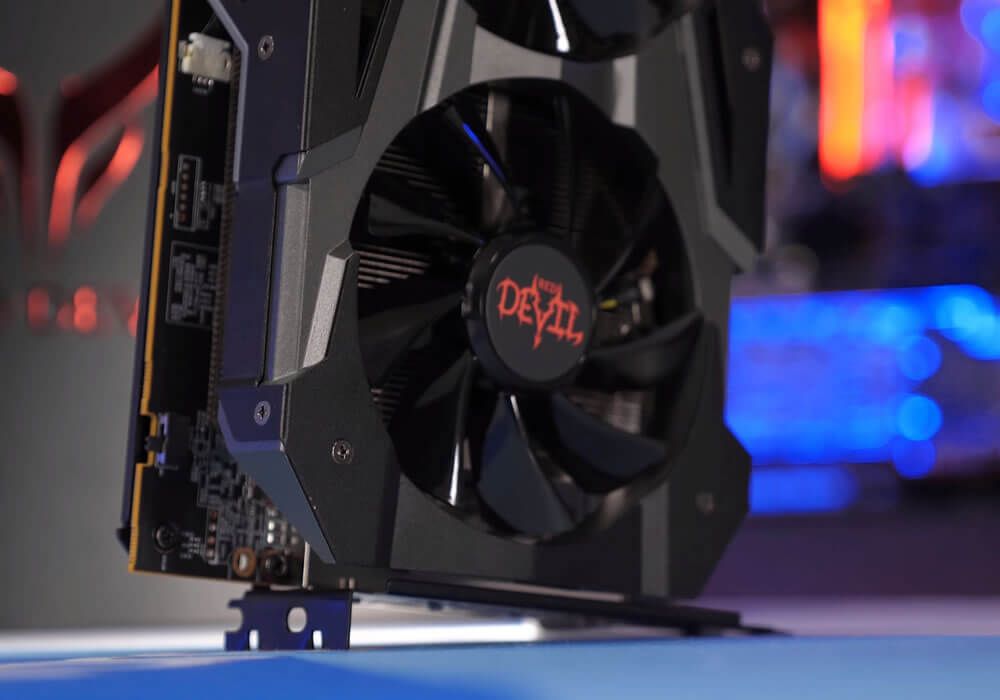
But let’s be honest, the competition between graphics cards is largely down to raw performance and value for money, and AMD seems confident that it’s up against Nvidia’s RTX lineup.
Similar: Best Graphics Cards 2019
Specs & Technology — What are the specs for the RX 5700 XT?
Below is a comparison chart that compares the specs of two AMD Radeon graphics cards to Nvidia’s closest competitors, the RTX 2070 and RTX 2060. AMD itself has stated that it sees these particular RTX GPUs as its biggest competitors, and assessing how similar the specs are, this not surprising.
| from | ||
| Power (W) | 263 | |
| Frequency of personnel | 43 |
such a feature clearly won not to improve your game experience, but this is a great one to see, this is well to see it, this how AMD thinks about how to reduce power consumption. David Attenborough will be proud.
Related: What is ray tracing?
Performance — How powerful is the RX 5700 XT?
The AMD Radeon RX 5700 XT is sold as a graphics card for Quad HD and Full HD gaming, and our test confirmed it. The RX 5700 XT isn’t powerful enough to play modern AAA games in 4K, but if you are, our tests show that this card may be one of the best looking cards on the market.
The RX 5700 XT isn’t powerful enough to play modern AAA games in 4K, but if you are, our tests show that this card may be one of the best looking cards on the market.
I also included the AMD Radeon RX 5700 in the benchmarks to make sure you’re better off buying AMD’s cheaper alternative, as well as the Nvidia RTX 2060 and RTX 2070 as AMD named them as their closest competitors.
RX 5700 XT is capable of playing most games in Quad HD at 60fps
In fact, Nvidia will be phasing out the RTX 2070 very soon and replacing it with the RTX 2070 Super Edition, but we haven’t been able to test the new line of Super cards yet Nvidia. As soon as we receive them, we will definitely supplement this review with the test results.
Please note that all cards tested are Founders Editions, with the exception of the RTX 2070, which is an Asus ROG Strix Gaming variant as it was the only RTX 2070 card available to us. However, the performance results of the third part of the RTX 2070 should not differ much from the Founders Edition board.
Test Methodology
We tested each graphics card on the same hardware in our office, making sure the processor, SSD, and RAM worked together to achieve fair results. The exact components can be seen below:
We also carefully selected three games to ensure a fair test between graphics cards and therefore there was no unfair advantage for any particular GPU architecture. For example, Shadow of the Tomb Raider is optimized for Nvidia drivers and so we also included AMD-optimized The Division 2 to keep the test fair. Finally, we’ve included Dirt Rally as an example of a game released a few years ago that isn’t as GPU intensive as the other two games.
Each game has been set to the highest graphics preset, commonly referred to as «Ultra» or «Highest». The only custom changes I made to the settings was to turn off Vsync as I didn’t want our monitor to affect frame rate readings.” Refresh rate.
Read below to see the results:
Shadow of the Tomb Raider test results — RX 5700 XT
Shadow of the Tomb Raider is optimized for Nvidia hardware — even with ray tracing support — so expected The RTX 2070 will surpass the lead in this test.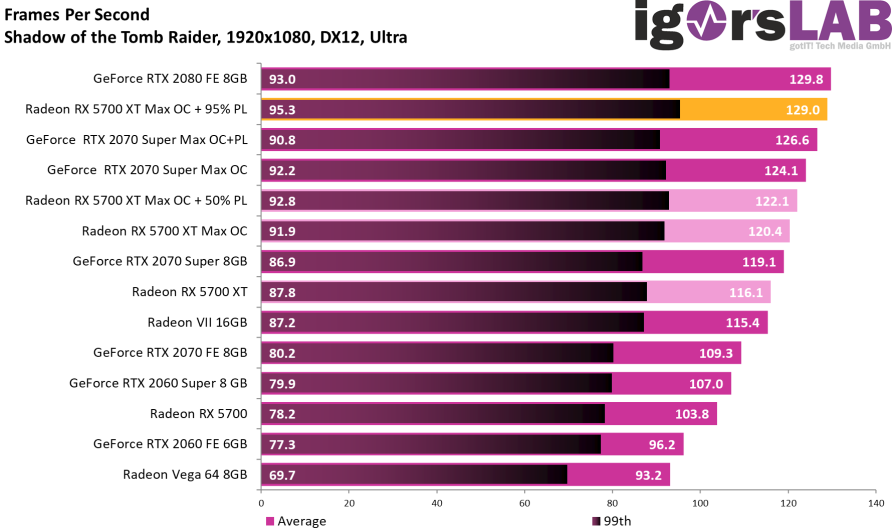 This was not the case though.
This was not the case though.
The AMD 5700 XT actually performed better than the Nvidia RTX 2070 card in every 4K resolution test, although every test was tough. The fact that it lost in Ultra HD isn’t much of an issue as the 37fps result that the AMD card put out isn’t high enough to play without technical issues.
However, the more interesting comparison is that the cheaper AMD 5700 graphics card remained at arm’s length for each test result. Based on this, I will be tempted to choose AMD 5700 instead of XT and save some money at the same time — the performance losses are so minimal that they are unlikely to be noticeable.
Ignoring comparisons with other cards, the AMD 5700 XT’s results for Shadow of the Tomb Raider are very impressive, highlighting excellent performance when the resolution is set to Quad HD or Full HD.
Division 2 Results The RX 5700 XT
Division 2 is optimized for AMD GPUs, so you’d expect the Radeon RX 5700 XT to have an edge over Nvidia’s competitors in this competition. Slightly disappointing, though, the AMD GPU delivered almost identical results to the Nvidia RTX 2070 for the 4K and Quad HD benchmarks. However, the 4K result is irrelevant as the 34fps result is too low for anyone to play comfortably, especially since this is an online multiplayer shooter.
Slightly disappointing, though, the AMD GPU delivered almost identical results to the Nvidia RTX 2070 for the 4K and Quad HD benchmarks. However, the 4K result is irrelevant as the 34fps result is too low for anyone to play comfortably, especially since this is an online multiplayer shooter.
It’s not until you switch the resolution to Full HD that you’ll see the Radeon RX 5700 XT decently outperform the RTX 2070, hitting an impressive 93fps average. However, the lead is only 7 fps, so the naked eye will almost certainly not be able to detect the difference.
An important point taken from The Division 2 test is that the AMD 5700 XT comfortably exceeds the 60fps target for both Quad HD and Full HD, so performance will be smooth enough to play online shooter no problem.
Dirt Rally Results — RX 5700 XT
We included Dirt Rally in our test process because it’s a great example of a GPU-intensive game released a few years ago. If a graphics card can deliver decent performance with that name, it should be able to handle most games released before 2015.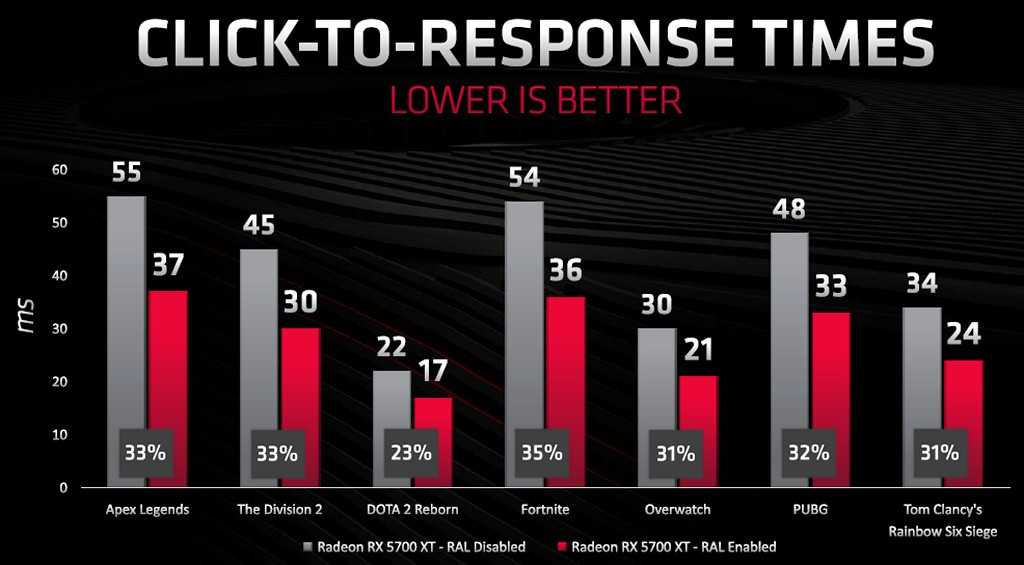
Interestingly, while the Radeon RX 5700 XT was not marketed as a 4K graphics card, with Dirt Rally it achieved an impressive average of 83 fps when the resolution was bumped up to Ultra HD. Granted, Dirt Rally is far less demanding than modern AAA titles, but it’s still a very reassuring result if you’re looking to play up your roster of classic hits.
The AMD Radeon RX 5700 XT also delivered better frame rates in the Quad HD and Full HD benchmarks than the Nvidia RTX 2070, and was only 2fps behind for 4K.
However, the cheaper Radeon RX 5700 didn’t fall far behind its bigger siblings’ scores, with a 12fps difference being the biggest advantage in every resolution test. Such results would make me hesitate to spend another $50 on the XT.
3DMark Fire Strike Ultra — RX 5700 XT 9 Test Results0201
The 3DMark Fire Strike Ultra test measures raw GPU performance and GPU temperature, simulating a 4K game. This is a good way to unlock the performance potential of a graphics card, although numbers should be used with caution as they don’t give an accurate measure of in-game performance.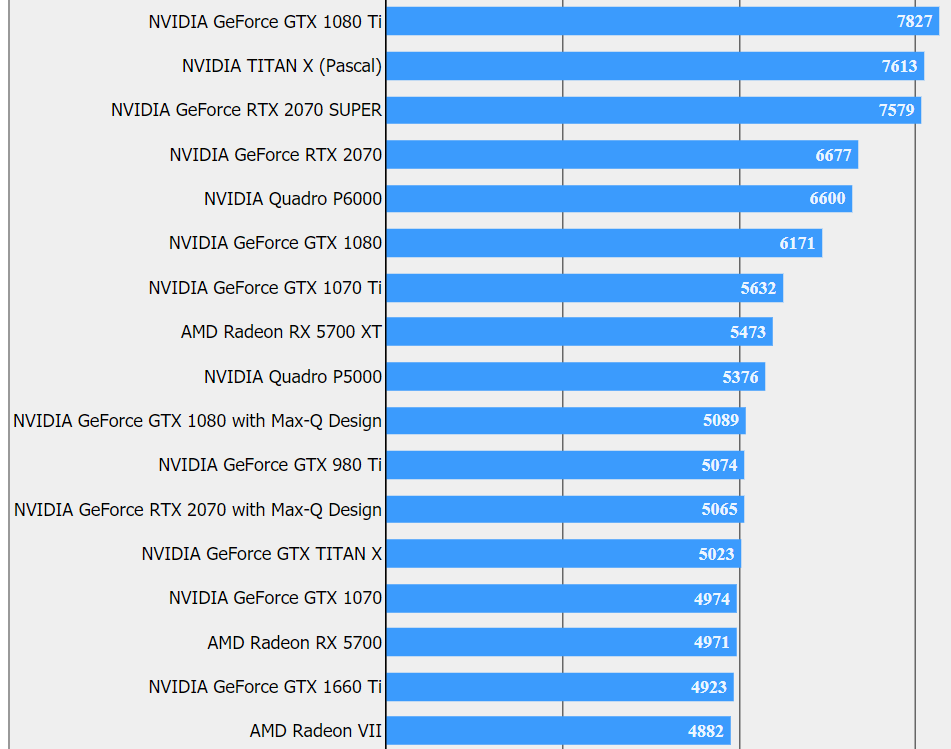
The AMD 5700 XT came out on top in the four-way test with a performance score of 5927. The RTX 2070 wasn’t far behind though with a Fire Strike Ultra score of 5710. Interestingly, the AMD 5700 was only able to hit 5351, which doesn’t really reflect it. excellent results in the game.
With a peak power consumption of 356 W during the 3DMark Fire Strike Ultra test, the RX 5700 XT required the most power of the graphics card quartet. This is not necessarily a bad thing, you just need to make sure your PSU is capable of powering it.
It was” However, this is good news for the temperature test: the RX 5700 XT generates the most heat over time compared to other graphics cards tested. With a peak temperature of 80°C during the 3DMark Fire Strike Ultra test, temperatures rose to relatively degrees. That’s not to say you should be worried this graphics card will catch fire, but you’ll want to increase airflow and avoid using mini cases to keep this GPU in good condition. 9Related: Best PC Games of 2019
9Related: Best PC Games of 2019
Overclocking — Can you overclock the RX 5700 XT?
Given that the AMD Radeon RX 5700 XT has already seen temperatures soar to 80°C during non-overclocked testing, I wasn’t really hoping I could squeeze a lot more performance out of the card before meeting resistance.
My expectations turned out to be accurate as after reaching 136 MHz overclock while running Unigine Heaven I couldn’t push it any further. I’m not sure if it was AMD drivers or MSI’s Afterburner overclocking software that stopped my progress, but either is still an indicator that the RX 5700 XT is starting to hit its limit.
Overclocked to 136MHz, the RX 5700 XT achieved a performance boost of just 5fps while running Unigine Heaven. It’s nothing special, so I wouldn’t waste time overclocking this card unless you’re serious about GPU tweaking.
Should I buy AMD Radeon RX 5700 XT? The
AMD Radeon RX 5700 XT is currently one of the best graphics card options available if you’re looking to game in Quad HD (2560×1440).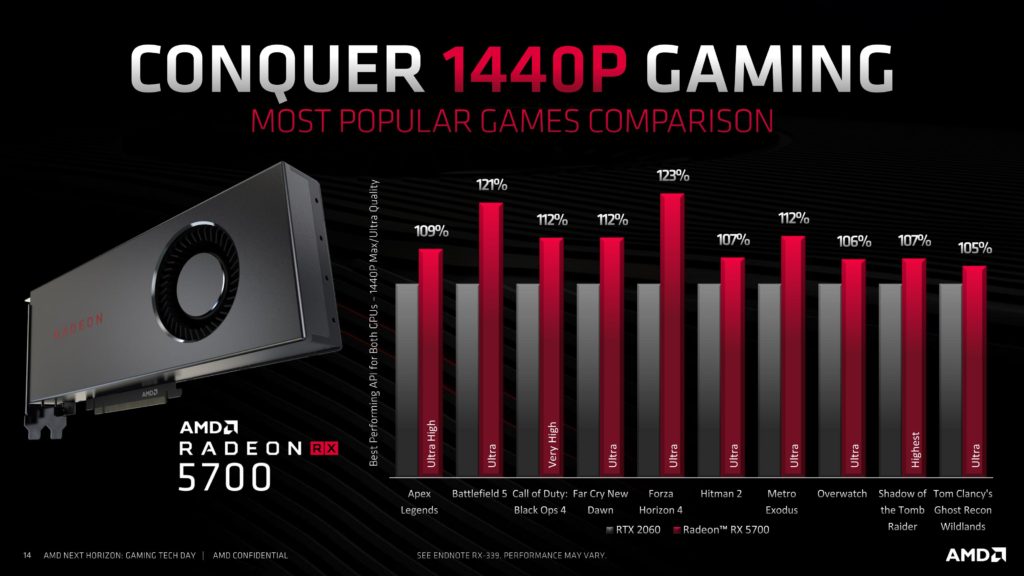 Every game we tested at this resolution easily surpassed 60fps with graphics settings maxed out.
Every game we tested at this resolution easily surpassed 60fps with graphics settings maxed out.
But while the RX 5700 XT often outperformed the RTX 2070 in performance tests, Nvidia probably still has the upper hand, as its RTX card offers jaw-dropping beam-tracking. The choice between AMD or Nvidia basically comes down to, «We’re happy to pay £70 extra for ultra-realistic light rendering technology — otherwise the RX 5700 XT is your card.
RX 5700 XT is one of the best Quad HD graphics cards.
That said, Nvidia’s new Super RTX cards may have already denied AMD’s short lead. The RTX 2060 Super graphics card looks very similar to the RX 5700 XT, and if Nvidia’s new card can match AMD’s performance could very well be the better option. We won’t know for sure until we test the new Supercard, but we’ll update this review as soon as we do.
Not excited to see our RTX 2060 Super review? Then the RX 5700 XT is still an excellent option, you won’t be disappointed. Although I suggest taking a look at the test results for the cheaper RX 5700 card first, as it probably represents a better value.
Although I suggest taking a look at the test results for the cheaper RX 5700 card first, as it probably represents a better value.
Related: AMD Radeon 5700 Review
Judgment
One of the best graphics cards for Quad HD gaming, if you happily forget about ray tracing.
Unlike other sites, we thoroughly test every product we review. We use standard industry benchmarks to properly compare features. We will always tell you what we find. We never, ever accept money for a product review.
Tell us what you think — send your letters to the editor.
ATI Radeon HD 5700 specifications, price, gaming test, competitors
9043
ATI Radeon HD 5700 announced 0000-00-00 and later went on sale for our tests, game performance is 2. 4 points of 100.
4 points of 100.
In Russia
Want to buy a Radeon HD 5700 cheaply? Look at the list of stores that already sell a video card in your city.
ATI Radeon HD 5700 benchmark
Gaming speed
ATI Radeon HD 5700 performance in games, benchmarks and similar applications, according to our tests.
Office computer
Office computer
Popular among users who choose a graphics adapter for the office.
Workstation
Popular with users looking for a workstation graphics adapter.
Data obtained from tests by users who tested their systems with and without overclocking. Thus, you see the average values corresponding to the video card.
Our benchmarks
3D DX9 |
||
| Minimum | Average | Maximum |
| 14 | Illumination: 15 | 16 |
|
Lighting 2. |
||
| 11 | Reflections: 12 | 14 |
| 12 | Parallax: 13 | 14 |
DirectX 9 3D graphics test suite. DirectX 9 is an API that has been used to create many games. Although obsolete, it remains relevant to this day. It has been used to create popular games that have already become classics, such as Halo, Far Cry, Doom 3 and Half Life Two.
3D DX10 |
||
| Minimum | Average | Maximum |
| 10 | MRender: 11 | 11 9009 |
|
MRender 2 |
||
| 11 | N-body: 12 | 12 |
|
N-body 2. |
||
| 10 | Spray: 12 | 15 |
|
Spray 4.2 |
DirectX 10 3D Graphics Test Suite DirectX 10 is a newer set of APIs that are used to build popular games. Gradually losing relevance, however, is used in such well-known games as Battlefield 4, Company of Heroes, Crysis and Dirt.
Features
Main
| Manufacturer | ATI |
Video processor specifications
Video memory specifications
Supported technologies
Detailed specifications
Theoretical performance
Other
Competitors
| Games | Office | Heavy duty | |
|---|---|---|---|
| Better than | Nvidia NVS 510 | Intel HD Graphics P4600 | Nvidia GeForce 7900 GTX |
| Worse than | Nvidia GeForce GT 755M | AMD Radeon HD 8760 | AMD FirePro M8900 |
Please note that competitors are selected automatically based on performance in a particular task.


 While GTX graphics cards put a lot of emphasis on a dual-fan setup, with an eye-catching black and silver color combination that makes them look like they’ve jumped straight out of a steampunk novel, the RX 5000 series cards have adopted a more elegant and modern look. .
While GTX graphics cards put a lot of emphasis on a dual-fan setup, with an eye-catching black and silver color combination that makes them look like they’ve jumped straight out of a steampunk novel, the RX 5000 series cards have adopted a more elegant and modern look. . 
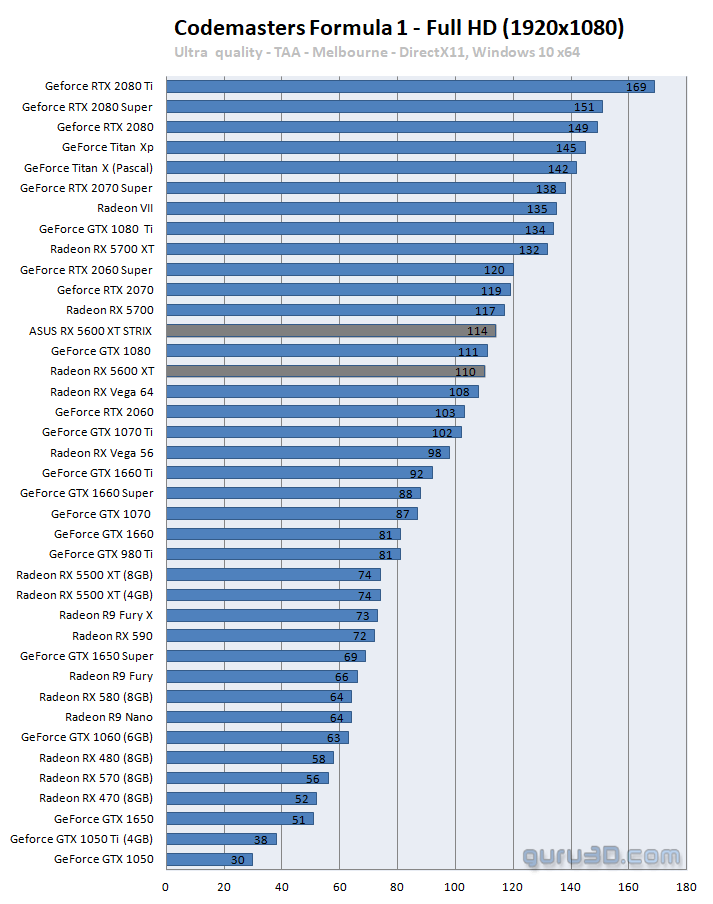

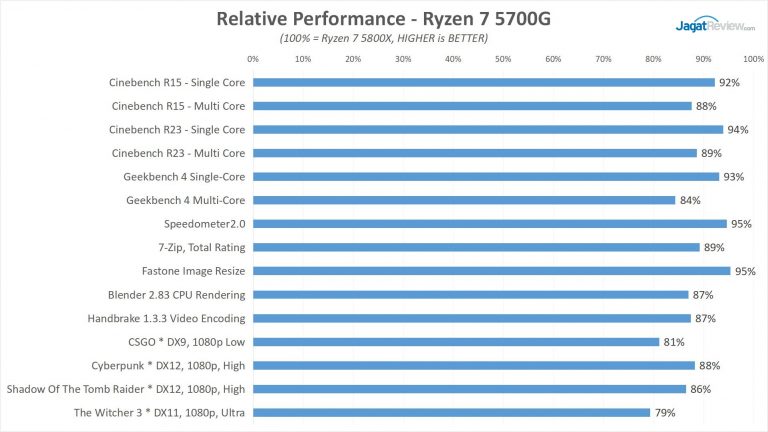
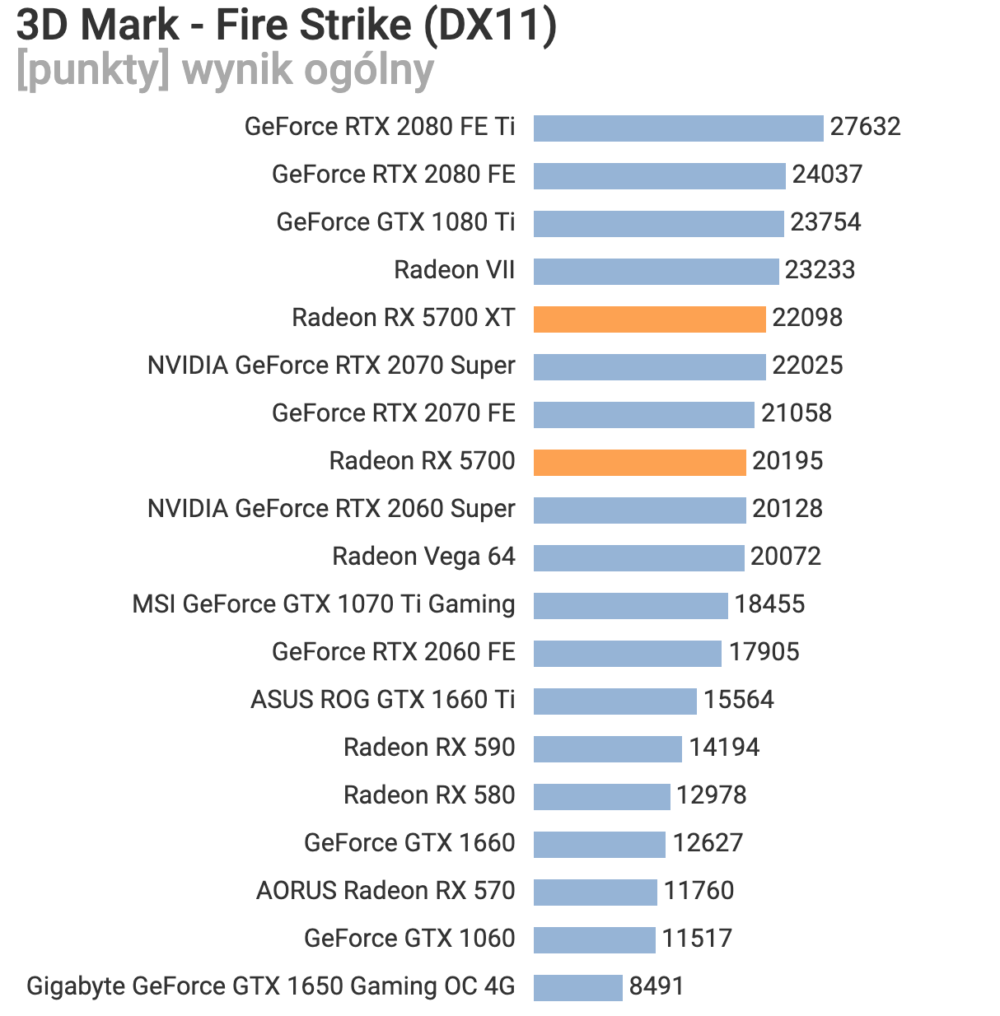 7
7  1
1